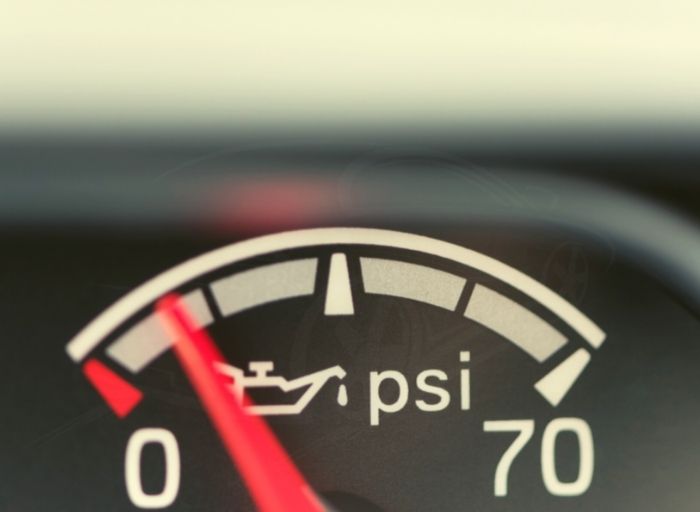
It is critical for the engine to have adequate oil pressure. Because fast-moving metal surfaces generate a lot of heat and friction, they require constant lubrication to avoid damage to different pieces and the engine as a whole. So, is driving with bad oil pressure sensor safe?
Driving with a malfunctioning oil pressure sensor is not always a smart idea since it stops you from knowing if your oil pressure is low, which can harm your engine and put you and your car in danger. You can, however, drive if absolutely necessary. However, get it addressed as soon as possible because the longer you wait, the worse it will become.
Table of Contents
What Is an Oil Pressure Sensor and How Does It Work?
Oil is a well-known fact that plays an important role in any engine. It’s utilized to lubricate and decrease friction damage all across the engine, so if you don’t have it, you’re going to be in a lot of trouble. Your vehicle will use an oil pressure sensor to notify you how much oil is being pushed through it, with data sent to a gauge on the dashboard through a simple electric switch.
When the oil pressure falls outside of your vehicle’s normal range, it sends a warning signal, which is displayed on your dashboard to alert you that there is a problem that needs to be addressed.
Is It Safe To Drive With Bad Oil Pressure Sensors On?
With so many possible causes for your faulty oil pressure sensor, it is regarded as dangerous to drive until you can determine the true cause of the alert and examine the vehicle’s safety features.
If you’ve figured out what’s causing your vehicle’s oil pressure sensor to malfunction, you should weigh your alternatives before driving it to make sure it’s safe to do so without causing any unwanted engine damage.
Many auto professionals will examine your oil sensor for free to help you figure out what’s wrong, but until you figure out what’s wrong with your oil pressure sensor, drive gently, pull over where it’s safe, and check your engine’s oil levels to make sure there are no leakage or major consequences.
Before driving your vehicle, try replacing the sensor to see whether it fixes the problem; if it doesn’t, seek guidance from a reputable mechanic.
The Symptoms of a Bad Oil Pressure Sensor
You know there’s a purpose for the oil pressure warning light to come on, but what if it starts appearing at seemingly random times that don’t make sense? What is the best way to tell if the oil pressure sensor is malfunctioning? Here are some warning indicators to look out for:
#1 Oil pressure light blinks frequently
Even if the oil pressure in the engine is varying, the light on the dashboard will blink constantly, even if there is no problem. As a result, you can manually examine the oil level; if it’s correct, the sensor is defective.
#2 The check engine light is on
A warning light indicates that something is wrong with your vehicle. If you’re certain there’s nothing wrong with it but the check engine light keeps glowing, there’s a good probability your oil pressure sensor is malfunctioning.
#3 Low oil levels
Every car has a dipstick for checking the oil level in the engine. There’s no excuse for running out of oil when these are so inexpensive and simple to replenish. If the oil level is low and the dipstick displays the same, it could be a sign of a faulty oil pressure sensor.
#4 Disgusting smell
If you smell burning electronics or plastic, it’s likely that something in the engine compartment has overheated and caused damage. Look for signs of melting on the cable that links to the oil pressure sensor. The oil pressure sensor may be bad if it’s melted.
#5 Overheating of the engine
Turn off your automobile if it’s hot and inspect the engine for leaks or coolant leakage. It’s possible that your oil level has dipped too low, leading the car to overheat. More significantly, leaking oil could be a concern if you have a broken block from previous overheating.
What Should You Do if Your Oil Pressure Sensor Is Malfunctioning?
We’ve already mentioned how dangerous it is to drive with a faulty oil pressure sensor. However, there are two things you can do if this occurs:
#1 Change the sensor
You can either purchase a suitable oil pressure sensor or have yours checked for free at an auto parts store. Otherwise, you’ll need to contact your mechanic right once to schedule an appointment.
#2 Be cautious when driving
If you notice that your car’s engine is low on oil, pull over right away and inspect it for leaks. Avoid driving at fast speeds or revving your engine when you’re driving safely.
How Long Can I Drive with A Bad Oil Pressure Sensor?
If the engine has low oil pressure rather than a low oil level, you should have turned it off right away. P pulling over to the side of the road and turning off the automobile. It might just be the sensor if you’re lucky. If the oil pressure is truly low, you may have harmed the engine by continuing to drive.
What Is the Cost of Replacing an Oil Pressure Sensor?
The typical cost of replacing an oil pressure sensor is between $120 and $140. Labor expenditures are estimated to be between $70 and $90 per hour, with parts costing $55. This range excludes taxes and fees, as well as your individual car and geographic region. Repairs to the surrounding area may also be required.
Conclusion
Although seeing the engine oil sensor light can be worrying, recognizing the issues that could be caused and the essential points to examine are the best strategies to identify the issue at hand.
Hi there! I’m Naomi O’Colman. I’ve got years of experience working at an auto repair shop here in Texas under my belt. On top of that, ever since I was a kid I’ve been passionate about the auto industry. Since I’ve joined the team at automotivegearz.com I’ve been enthusiastically sharing my passion and insights with my readers. I’m dedicated to delivering high quality content and helping you stay up to date with the latest automotive trends and products out there!







